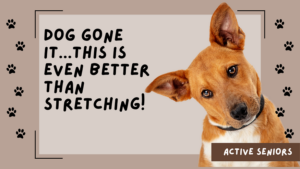 When was the last time you engaged in pandiculation? No, it’s not a religious ritual or a Beyoncé dance move, and certainly not an intimate interplay. In fact, you needn’t look any further than your beloved four-legged companion to witness the essence of pandiculation.
When was the last time you engaged in pandiculation? No, it’s not a religious ritual or a Beyoncé dance move, and certainly not an intimate interplay. In fact, you needn’t look any further than your beloved four-legged companion to witness the essence of pandiculation.
Pandiculation is our body’s innate mechanism for awakening the sensorimotor system and priming us for movement. Picture yawning and stretching, extending your arms, elongating your spine, and rotating your head, or observe the graceful stretch of your pet after waking from a nap. Pandiculation isn’t merely stretching; it involves a controlled contraction of muscles at their maximum length, alleviating accumulated stress from inactivity.
The benefits of pandiculation are manifold, encompassing improved posture, circulation, mobility, strength, proprioception, pain reduction, lymphatic flow, and neural, somatosensory, and cognitive stimulation. It’s an instinctive response observed even in utero.
What sets pandiculation apart is its motor sensory component. The process entails contracting muscles, lengthening them, and finally relaxing them, thereby stimulating a feedback loop among nerves, the spinal cord, and the brain. Pandiculation essentially hits the body’s natural reset button, facilitating efficient and effective muscle movement. In contrast, stretching lacks this crucial neural feedback loop.
Unfortunately, as we age, the benefits of pandiculation diminish due to compensatory mechanisms, sedentary lifestyles, poor posture, weakness, and decreased awareness. Consider the individual who spends hours hunched over a computer each day; their muscles shorten, tense up, and become painful. Attempts to alleviate the discomfort through stretching offer only temporary relief, as the muscles revert to their shortened state shortly after.
Pandiculation, however, teaches muscles to function properly again through an innate system that naturally resets muscle length and tension. As Thomas Hanna eloquently put it, “If you want to untie a knot, you must look at the cord carefully then gently undo the tangle. Yanking on the cord will only make the knot tighter.”
To enhance the power of pandiculation, I integrate it with one of the seven foundational movement patterns: squatting, lunging, pushing, pulling, rotating, hinging, and locomotion. These movements, collectively known as the Magnificent 7, encompass all activities and profoundly impact independence and quality of life as we age.
Here’s an example of pandiculation intertwined with a foundational movement pattern. If you’re experiencing pain or have any medical concerns, please refrain from attempting this exercise:
. Stand upright.
. Hinge at the hips and reach forward, extending your arms as if pushing against a wall.
. Hold for 10 seconds.
. Release the position and stand tall, extending your spine and hips, and reaching toward the floor with your arms.
. Hold for 10 seconds, then release.
. Stand naturally and relax for 10 seconds.
Pandiculation can be applied to all muscles and joints; just be creative and remember the three steps: contract, lengthen, and relax, within the framework of the Magnificent 7.
Take a cue from our furry companions and incorporate pandiculation into your routine after periods of inactivity. Consider this: when was the last time your dog or cat suffered from a sore back or pulled hamstring? Pandiculation might just be the “purrrrfect” addition to your health and wellness regimen.”
Erik Lehane, a dedicated physical therapist with expertise in preventive care, is the visionary founder behind The Gaitway Group (thegaitwaygroup.com). Through this venture, he empowers active seniors with the knowledge and tools to “add life to their years.” For inquiries, contact Erik at erik@eriklehane.com.
